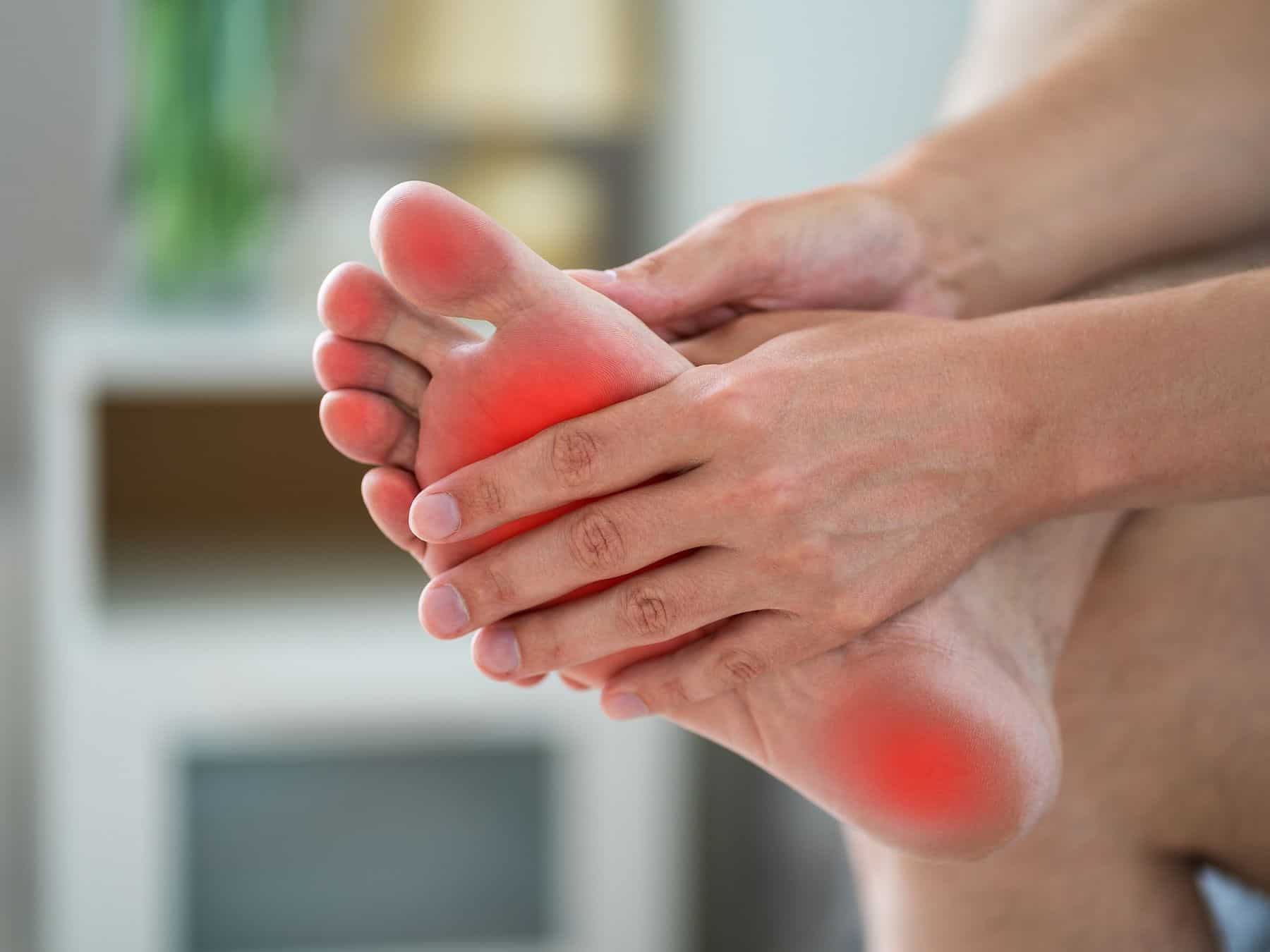What Is Gout
Gout is a common type of crystalline arthritis caused by too much uric acid, hyperuricemia. Uric acid is a normal metabolic byproduct that gets excreted through the kidneys. If there is too much that builds up in the body, it can crystallize and end up in the joints. The crystallization process occurs at cooler temperature areas of the body, which is why gout only affects peripheral joints and not the spine or hips. Hyperuricemia is due to adding too much uric acid into the body by diet or medications, or insufficient removal of uric acid from the body due to kidney disease, or both.
Who Gets It?
Gout is most common in middle and older-aged adults. Gout is more common in individuals with metabolic syndrome, meaning those with obesity, high blood pressure, diabetes, high cholesterol. When it affects younger people, it is more likely related to a hereditary metabolic condition that affects kidney handling of uric acid.
How Does It Present?
It classically presents as “podagra” which is a sudden onset, extremely painful, hot, red, swollen, big toe, to the point that someone cannot stand or walk. When severe, gout can affect multiple joints all at the same time, toes, ankles, elbows, fingers, wrists, knees. Gout flare-ups are usually less frequent and shorter, milder episodes at the beginning, and if it continues untreated or insufficiently treated, the flare-ups become more frequent and longer, more severe episodes. Very severe chronic gout can form “tophi” which is due to such excessive uric acid load that it clumps together and forms rocks either inside or around the joint.
How Is It diagnosed?
The most definitive way to diagnose gout is to drain fluid from the affected joint and analyze it for uric acid crystals under a microscope. This is often not practical however if it is a small joint or multiple affected joints. Most commonly the blood test for uric acid is checked along with x-ray’s and assessed in conjunction with symptoms.
How Is It treated?
The goals of gout treatment are to resolve the acute episode of pain and swelling, improve range of motion, but also to reduce the risk of recurrent flare-ups. Chronic gout can result in permanent joint damage, erosions, and deformity. Acute episodes are treated with anti-inflammatory medications such as steroid pills, injections, NSAIDs, and colchicine. Gout prevention is treated with uric acid-lowering medication such as allopurinol, febuxostat, probenacid, pegloticase. Tart cherry is a nutritional supplement that can help support a healthy uric acid level. Lifestyle measures are also important in gout treatment. This means adhering to a low uric acid diet, avoiding alcohol, avoiding high purine foods such as organ meats and seafood. It is also important that there is adequate treatment of comorbid obesity, high blood pressure, high cholesterol, and diabetes.
Schedule An Appointment With Our Doctor
You can schedule an appointment with Dr. Lomibao by calling our office or filling out our Request Appointment form. Lomibao Rheumatology & Wellness Care is a full-service rheumatology clinic with an on-site infusion lounge and telehealth services available for established patients. Lomibao Rheumatology & Wellness Care is currently accepting new patients, and we welcome you to join our family by contacting us today!
Lomibao Rheumatology & Wellness Care – Caring for the community we are so privileged to serve!


